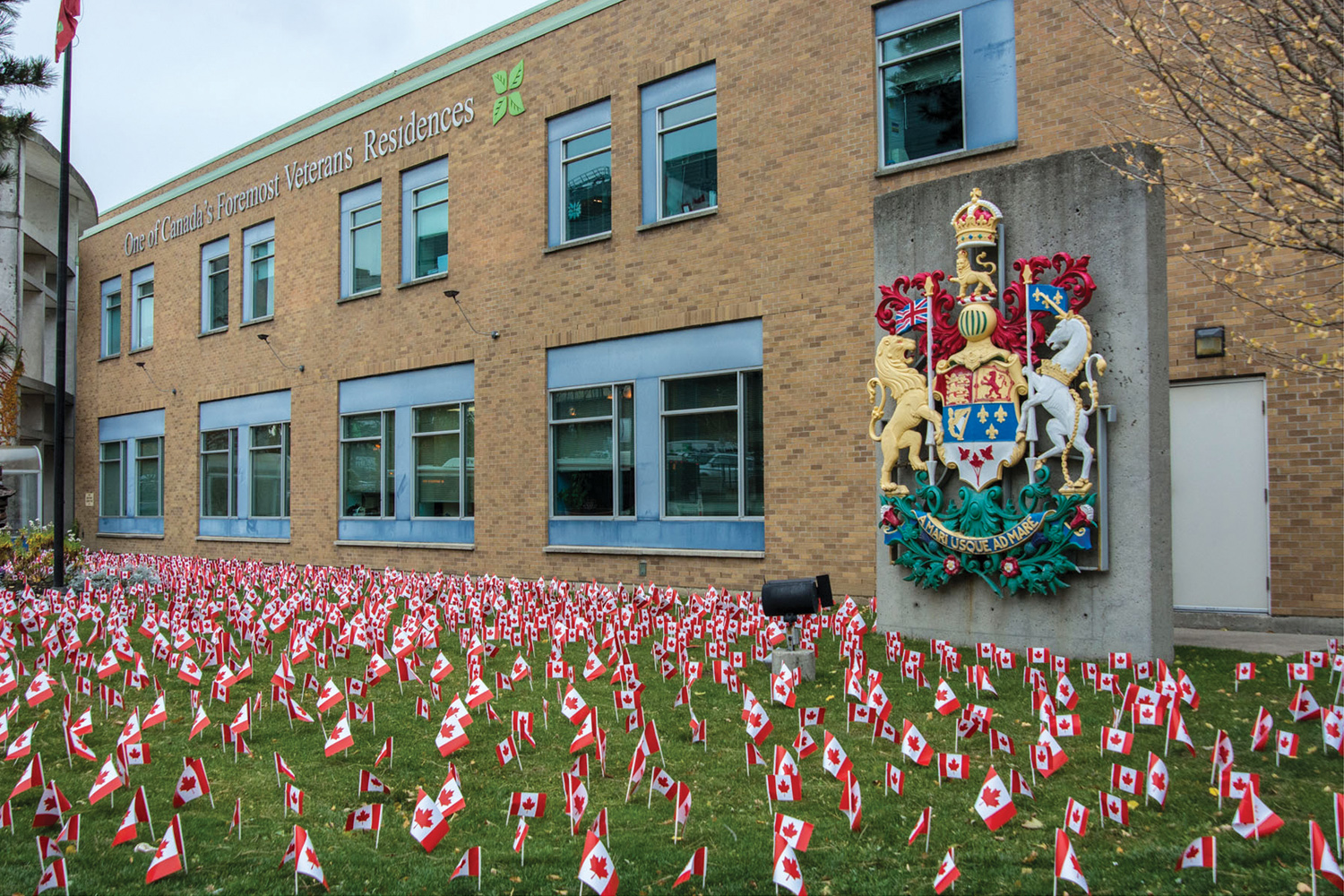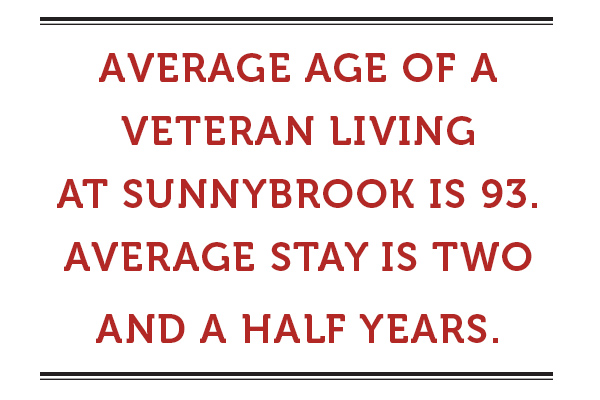Changing demographics have meant that veterans’ hospitals, such as Sunnybrook Health Sciences Centre in Toronto, are experiencing a reduction in waiting times not seen for several generations.
Sunnybrook, Canada’s largest veterans’ hospital, has room for 475 veterans, housed in two wings—the Kilgour Wing, named after the family who donated the land for the hospital, and Hees Wing, named after popular Veterans Affairs Minister George Hees. There is also the Dorothy Macham Home, which looks like a small house, providing care for those with challenging behaviours due to dementia. It is a secure building with 10 rooms and a therapeutic garden.

The Raise the Flag program at Sunnybrook Health Sciences Centre saw 30,000 flags planted on the lawn for Remembrance Day. [Sunnybrook Health Sciences Centre]
“We have 474 veterans now and we run at about 95 per cent capacity,” said Nancy Smokler, the centre’s manager of Resident and Family Experience and Safety. “Wait times vary from a week to several months depending on the care requirements and bed availability.”
Admission to Sunnybrook and other veterans’ facilities is handled by Veterans Affairs Canada. More than 6,300 veterans are cared for in approximately 1,400 nursing homes and other long-term care facilities in communities throughout Canada. The department provides financial support for beds in two settings, either in community facilities with beds that provide nursing-home care to veterans as well as other provincial residents or in contract beds in community facilities that have beds designated as priority-access for eligible veterans. However, with no more First World War veterans, these beds are going only to eligible veterans from the Second World War and Korea.
Three resolutions were passed at the 2016 dominion convention of The Royal Canadian Legion in St. John’s, N.L., calling on the federal government to allow needy veterans who served after 1953 to fill those beds, if they are available.
Sunnybrook got its start in the Second World War. When ill and injured veterans from that war began returning to Canada, pressure was put on the federal government to build a new facility to replace the Christie Street Hospital that served veterans who fought in the First World War and were still in need of medical attention. The building by the train station was old and inadequate for serving the younger veterans.
The heirs of the Kilgour family agreed to let the city sell 400 hectares of Sunnybrook Park to the federal government to build a new hospital with state-of-the-art medical equipment.
Sunnybrook Hospital was opened by Prime Minister Mackenzie King on June 12, 1948. During his speech he said: “In Sunnybrook Hospital, the government of Canada has sought to give some expression of the gratitude and obligation felt by all Canadians toward those veterans of the two great wars who were maimed, disabled or rendered infirm in the defence of freedom and who are still in need of medical care and attention.”
The newly established Department of Veterans Affairs became responsible for running the hospital and did so until the federal government began transferring the hospitals to provincial governments while still maintaining responsibility for supporting the veterans in the beds. Sunnybrook was sold to the University of Toronto for $1 in 1966.
Since then, the facility has become a teaching hospital with a world-class reputation for innovative research. Today residents benefit from the work of doctors, nurses, psychologists, dieticians, physiotherapists, occupational therapists, pharmacists, chaplains, audiologists, social workers, speech-language pathologists and recreation therapists.
Some of the most popular programs are the art, music and horticultural therapies. Each month there are approximately 30 outings by bus to various entertainment, sporting or social events. All activities are led by registered professional members of accredited therapy associations.
Today, the average age of a veteran living at Sunnybrook is 93. The average stay at the facility is about two and half years. “People want to stay in their own homes for as long as they possibly can,” said Smokler. But when the time comes to live with long-term care, the centre offers a variety of programs.
“A very popular program is our Grant a Wish program where we try to grant some great wish a veteran has had,” said Smokler. “Recently, we had one veteran who wanted to take a helicopter ride over Niagara Falls. We were able to provide that.”
This past Remembrance Day saw another Raise a Flag campaign in which 30,000 small Maple Leaf flags were planted on the lawns in front of the veterans centre the night of Nov. 10. When the veterans awoke on Remembrance Day, they were delighted to see the lawns full of Canadian flags.
Smokler said that there are no restrictions on where the veteran was residing before being accepted. Veterans come from across Canada and the United States. “There are no residency requirements. It is all about eligibility,” she said.
The hospital gets word out that it has beds for eligible veterans in a number of ways. It maintains a website that features the leading research done at the hospital. “Our reputation gets us a lot of mileage in helping the public know we are here for the veterans,” said Smokler.
The Community Care Access Centres in Toronto and elsewhere refer eligible veterans to the hospital and get the information out to families who may need to use the facility in the future.
“Legion branches are very important in getting word out, as well,” added Smokler.
Advertisement
























